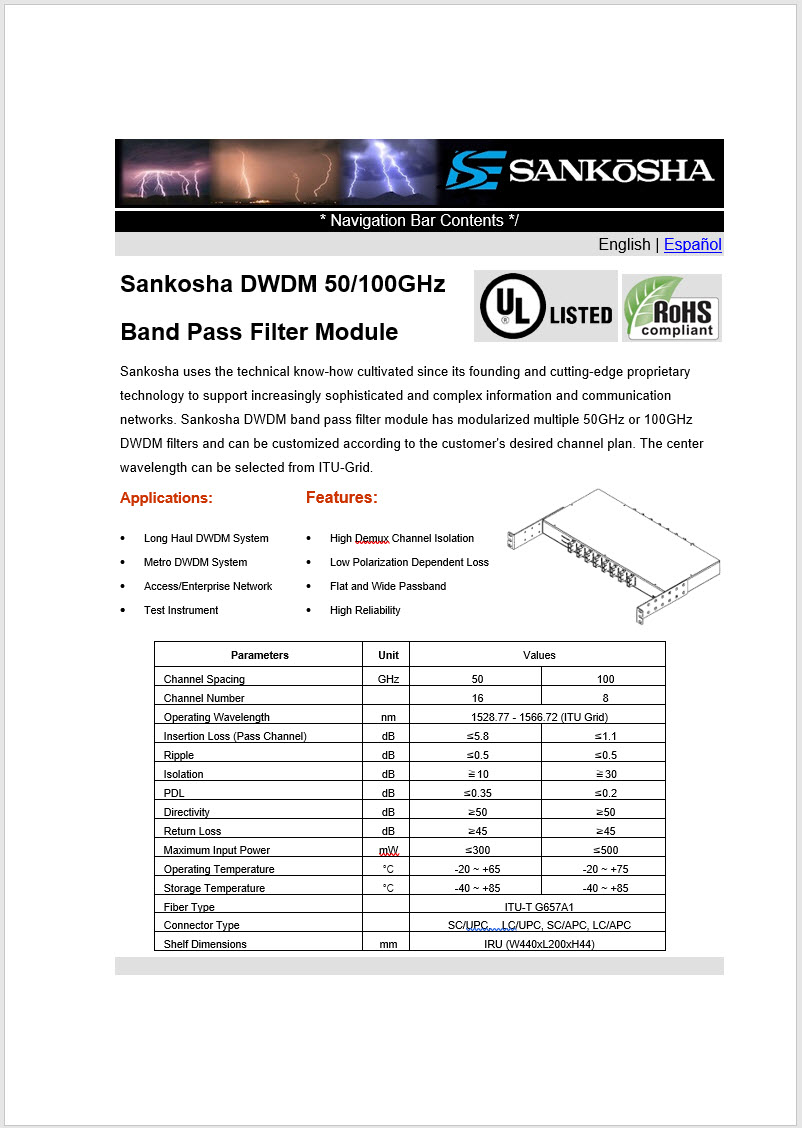Sankosha DWDM Module
Next Generation DWDM 50/100GHz Bandpass Filter Module
- Sankosha DWDM bandpass filter module has modularized multiple 50GHz or 100GHz DWDM filters and can be customized according to the customer's desired channel plan.
- WDM (Wavelength Division Multiplexing) is one of the optical communication technologies for transmitting a large-capacity signal, and can transmit a plurality of optical signals having different wavelengths over one optical fiber.
- On the transmitting side, signal light of various wavelengths is transmitted into one optical fiber using an optical multiplexer (Mux), and on the receiving side, it is separated using an optical de-multiplexer (DeMux) to receive each different wavelength of light.
- The first D of DWDM means "Dense" and is called as such because it is a relatively dense method in WDM technology.
- Generally, those that exceed 16 waves are called DWDM, and bundle 10 waves to several hundred waves, or more than 1000 waves in some cases. The wavelengths used in WDM are defined as channels in the ITU.
- In recent WDM devices, colorless type is increasingly used by which signals of all wavelengths are output to all channels. In this system, if there is a mistake in connection, an operation error will occur in which signals of other channels will be read.
- Sankosia DWDM bandpass filter module can accurately extract these ITU-defined channel wavelengths from DWDM multiplexed optical signals.
- By accurately extracting each wavelength on a channel-by-channel basis, the effects of crosstalk to other channels and operational errors such as incorrect channel connections are dramatically reduced.
- In the standard configuration, 16 channels with 50GHz spacing and 8 channels with 100GHz spacing can be mounted in a 1RU chassis, and various configurations are possible according to customer requirements.
- They are passive in nature with no power supply or cooling required. It is easy to install and requires no configuration or maintenance.

